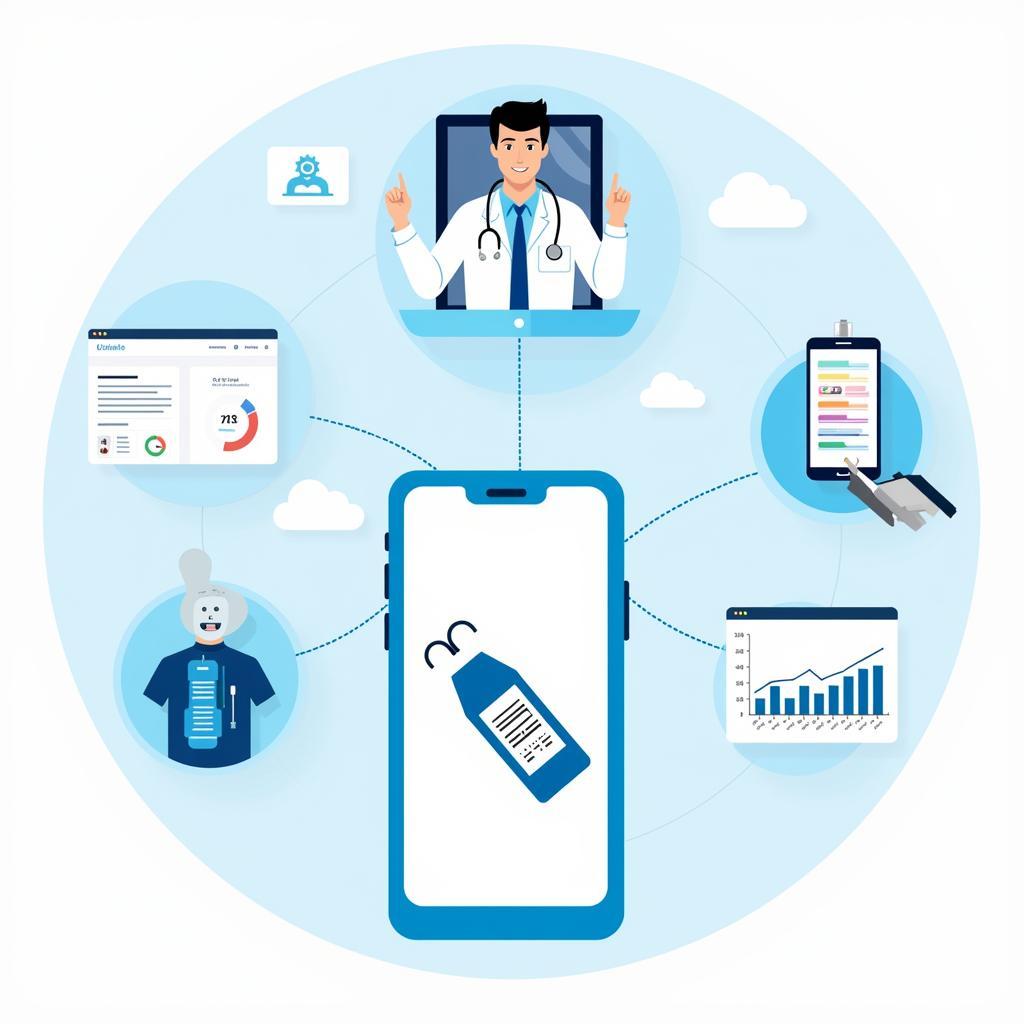Diabetes is a significant health challenge across ASEAN, impacting millions of lives and posing a substantial burden on healthcare systems. This article explores the intersection of ASEAN and diabetes, examining the prevalence, risk factors, and unique challenges faced by the region in combating this chronic disease.
The Diabetes Landscape in ASEAN
Southeast Asia is experiencing a rapid increase in diabetes prevalence. Factors such as urbanization, changing dietary habits, and increasingly sedentary lifestyles contribute to this alarming trend. The diverse cultural landscape within ASEAN also influences diabetes management, with varying access to healthcare and traditional health beliefs playing a role. Understanding these nuances is crucial for developing effective prevention and treatment strategies.
Prevalence and Risk Factors
The International Diabetes Federation (IDF) estimates that over 70 million adults in Southeast Asia are living with diabetes. This number is projected to rise significantly in the coming decades. Several factors contribute to the increased risk of diabetes in the ASEAN region:
- Rapid Urbanization: The shift from rural to urban living often leads to less physical activity and increased consumption of processed foods.
- Changing Dietary Habits: Traditional diets rich in fruits and vegetables are being replaced by diets higher in saturated fats and sugar.
- Genetic Predisposition: Certain ethnic groups within ASEAN have a higher genetic susceptibility to diabetes.
- Lack of Awareness: Limited public awareness about diabetes risk factors and symptoms hinders early diagnosis and treatment.
Addressing the Diabetes Challenge in ASEAN
Combating diabetes in ASEAN requires a multi-pronged approach. Governments, healthcare providers, and communities must work together to implement effective strategies.
Promoting Healthy Lifestyles
Encouraging healthy lifestyle choices is crucial for diabetes prevention. Public health campaigns can promote:
- Regular Physical Activity: Integrating physical activity into daily routines can significantly reduce the risk of developing diabetes.
- Balanced Diet: Promoting diets rich in fruits, vegetables, and whole grains can help maintain healthy blood sugar levels.
- Weight Management: Maintaining a healthy weight is essential for preventing and managing diabetes.
Improving Access to Healthcare
Access to affordable and quality healthcare is vital for effective diabetes management. This includes:
- Early Diagnosis and Screening: Regular screening programs can help identify individuals at risk of developing diabetes.
- Affordable Medication and Treatment: Ensuring access to affordable insulin and other essential medications is crucial for managing the disease.
- Diabetes Education: Providing patients with the knowledge and skills to manage their condition effectively is essential for improving outcomes.
Leveraging Technology
Technology can play a significant role in improving diabetes care in ASEAN. Examples include:
- Telemedicine: Remote consultations and monitoring can improve access to care for individuals in remote areas.
- Mobile Health Apps: Apps can help individuals track their blood sugar levels, medication adherence, and other important health metrics.
- Data Analytics: Analyzing health data can help identify trends and develop targeted interventions.
 Leveraging Technology for Diabetes Management in ASEAN
Leveraging Technology for Diabetes Management in ASEAN
Conclusion
Diabetes poses a significant and growing threat to the health and well-being of people across ASEAN. Addressing this challenge requires collaborative efforts and innovative solutions. By promoting healthy lifestyles, improving access to healthcare, and leveraging technology, ASEAN can work towards a healthier future for its citizens and effectively manage the burden of diabetes.
FAQs
- What are the early signs of diabetes?
- How is diabetes diagnosed?
- What are the different types of diabetes?
- What are the long-term complications of diabetes?
- How can I prevent diabetes?
- What are the best foods to eat if I have diabetes?
- How can I manage my diabetes effectively?
Common Scenarios and Questions:
-
Scenario: A young adult in an urban area experiences increased thirst and frequent urination.
- Question: Could these be signs of diabetes?
-
Scenario: An individual with a family history of diabetes is concerned about their risk.
- Question: What steps can I take to reduce my risk?
-
Scenario: A person living in a rural area has limited access to healthcare.
- Question: How can I access diabetes care?
Further Resources:
- Learn more about diabetes prevention strategies on our website.
- Read our article on the impact of diabetes on ASEAN economies.
Need support? Contact us 24/7: Phone: 0369020373, Email: [email protected], or visit us at: Thon Ngoc Lien, Hiep Hoa, Bac Giang, Vietnam.


